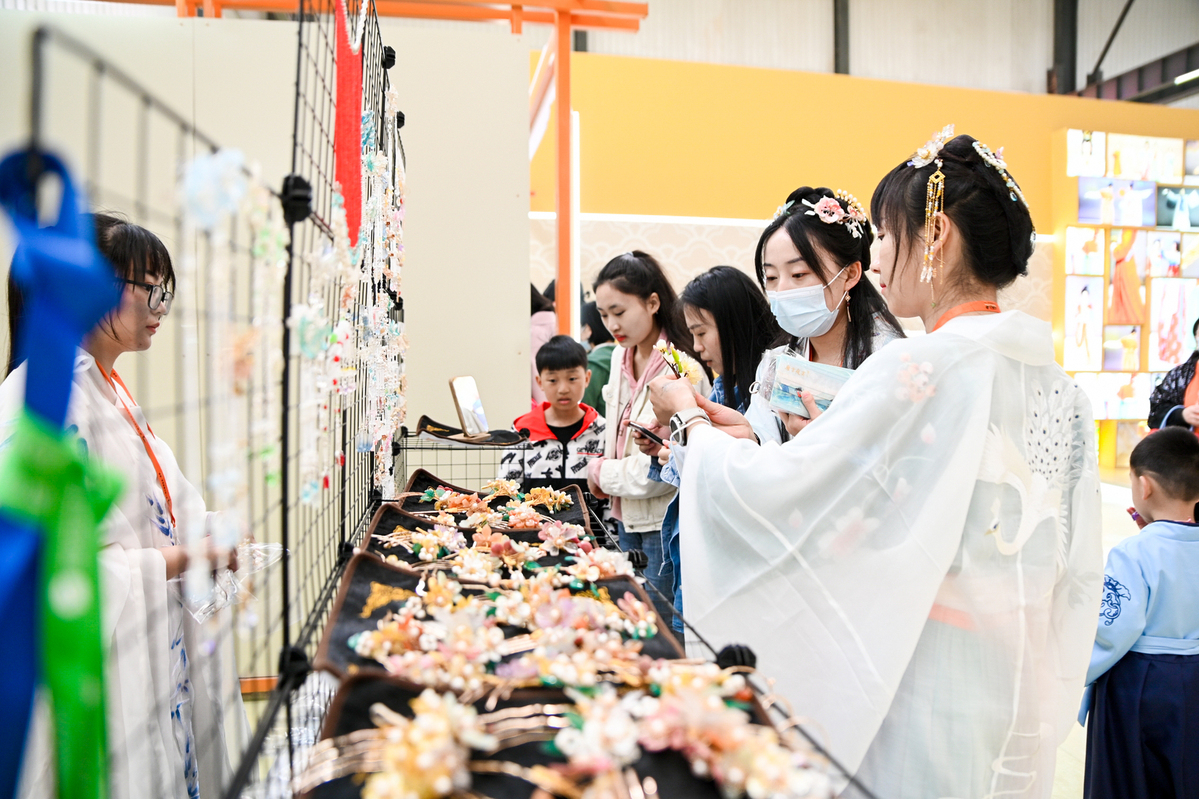

To tap into the fad, some tourist attractions have held hanfu-themed events and offered discounts and waivers for admission tickets to visitors wearing hanfu.
Last year, the ancient town of Xitang in East China's Zhejiang province attracted some 187,000 tourists during its hanfu cultural week, including more than 86,000 visitors dressed in the traditional garment.
Zhu Keli, a researcher on new economy with the Development Research Center of the State Council, said the growing popularity of hanfu among Chinese young people arises from their increasing appreciation for traditional culture and their need to express their individuality.
The new economy and e-commerce platforms have further spurred the development of the niche market, Zhu said.
The report by iiMedia Research predicted the sales volume of China's hanfu market to exceed 10 billion yuan (about $1.5 billion) this year.
The booming market has been attracting an increasing number of young, hanfu-loving entrepreneurs.
Wu Qiuqiao, 27, owns a shop on Taobao, China's major online shopping platform, which mainly sells specially-designed hanfu for pet cats. Wu opened the shop in 2019 after quitting her previous job in Beijing to pursue her real interests -- hanfu and cats.
"I was trying to do something different, and the idea of hanfu for cats is so original and combines my top two interests," she said.
The novel idea has turned out a big success. To date, Wu's shop has garnered over 16,000 followers on Taobao, with the highest monthly sales topping 70,000 yuan.
Wu said her main concerns when designing hanfu for cats are how to make the clothing more comfortable for the animals and how to retain the original flavor of hanfu.
"I'm happy that the special hanfu can win the hearts of so many cat owners," she said.